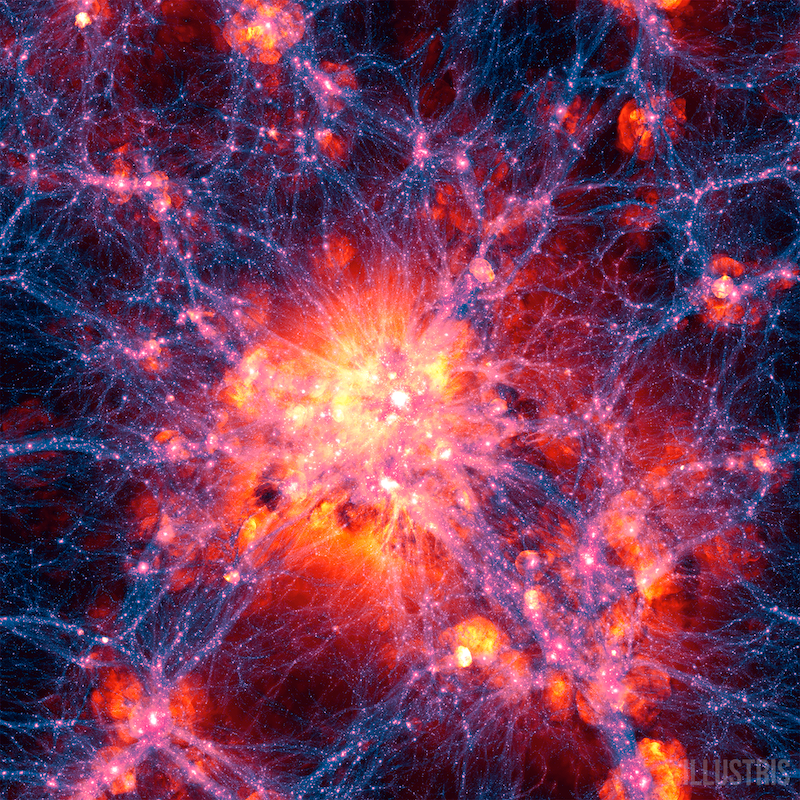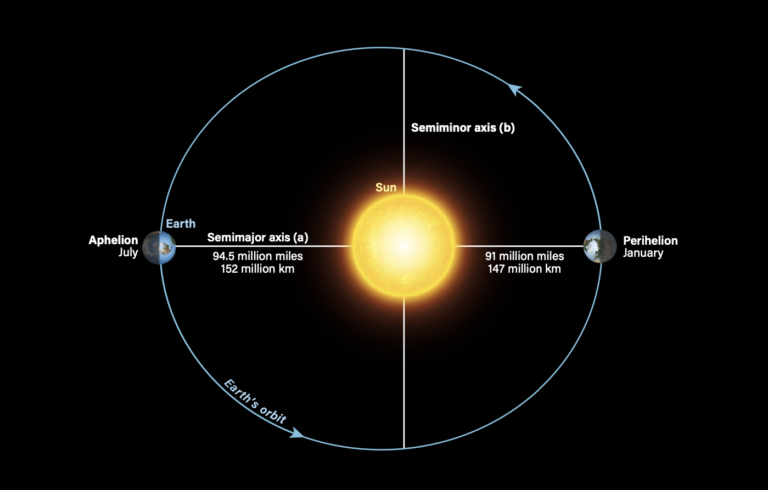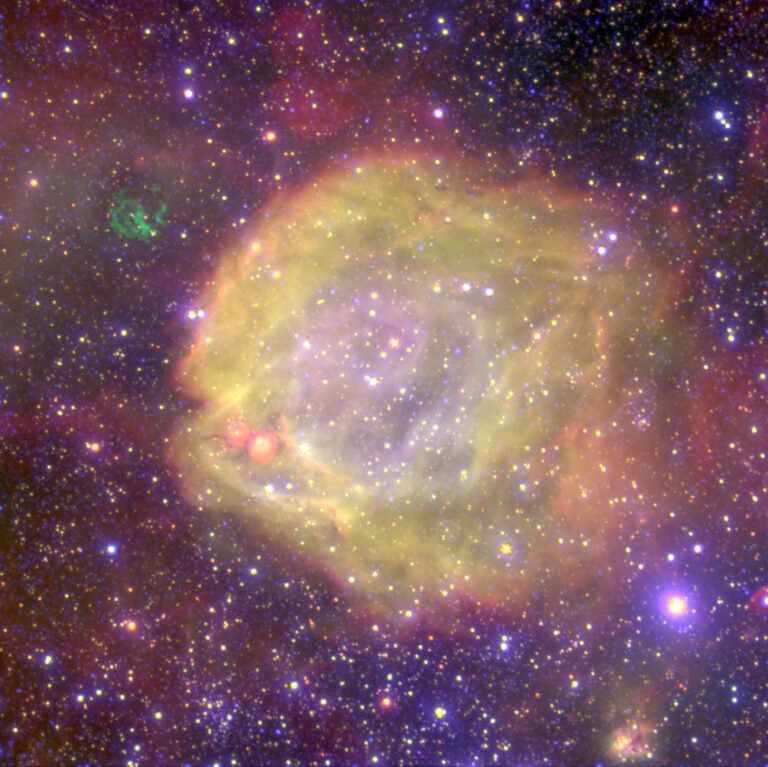Astronomers have caught multiple massive galaxies in the act of merging about 4 billion years ago. This discovery, made possible by combining the power of the best ground-based and space-based telescopes, uniquely supports the favored theory of how galaxies form.
How do galaxies form? The most widely accepted answer to this fundamental question is the model of “hierarchical formation,” a step-wise process in which small galaxies merge to build larger ones. One can think of the galaxies forming in a similar way to how streams merge to form rivers, and how these rivers, in turn, merge to form an even larger river. This theoretical model predicts that massive galaxies grow through many merging events in their lifetime. But when did their cosmological growth spurts finish? When did the most massive galaxies get most of their mass?
To answer these questions, astronomers study massive galaxies in clusters, the cosmological equivalent of cities filled with galaxies. “Whether the brightest galaxies in clusters grew substantially in the last few billion years is intensely debated. Our observations show that in this time, these galaxies have increased their mass by 50 percent,” says Kim-Vy Tran from the University of Zurich, Switzerland, who led the research.
The astronomers made use of a large ensemble of telescopes and instruments, including ESO’s Very Large Telescope (VLT) and the Hubble Space Telescope, to study in great detail galaxies located 4 billion light-years away. These galaxies lie in an extraordinary system made of four galaxy groups that will assemble into a cluster.
In particular, the team took images with VIMOS and spectra with FORS2, both instruments on the VLT. From these and other observations, the astronomers could identify a total of 198 galaxies belonging to these four groups.
The brightest galaxies in each group contain between 100 and 1000 billion of stars, a property that makes them comparable to the most massive galaxies belonging to clusters.
“Most surprising is that in three of the four groups, the brightest galaxy also has a bright companion galaxy. These galaxy pairs are merging systems,” says Tran.
The brightest galaxy in each group can be ordered in a time sequence that shows how luminous galaxies continue to grow by merging until recently, that is, in the last 5 billion years. It appears that due to the most recent episode of this ‘galactic cannibalism’, the brightest galaxies became at least 50 percent more massive.
This discovery provides unique and powerful validation of hierarchical formation as manifested in both galaxy and cluster assembly.
“The stars in these galaxies are already old and so we must conclude that the recent merging did not produce a new generation of stars,” concludes Tran. “Most of the stars in these galaxies were born at least 7 billion years ago.”









